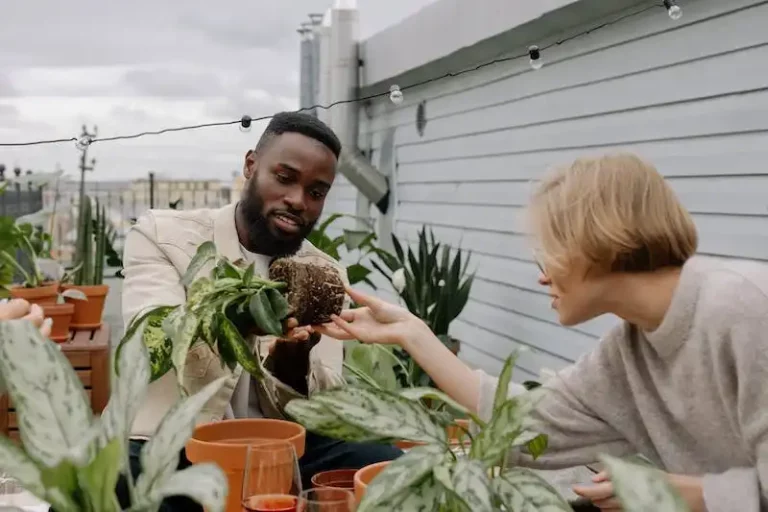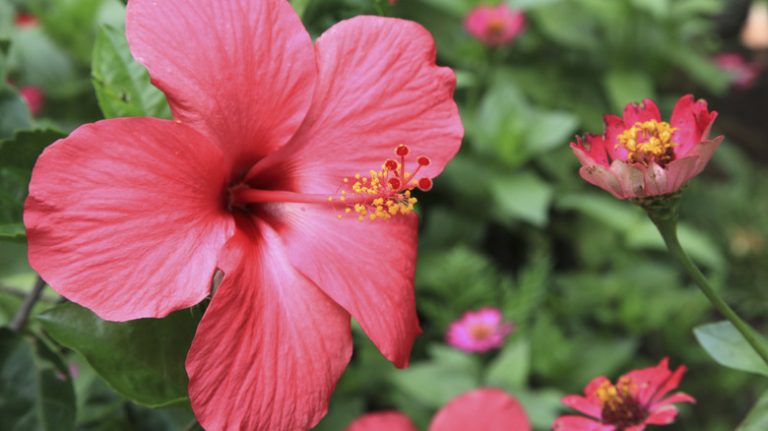When it comes to adding a splash of vibrant color to your garden, few choices are as beautiful or as easy to grow as the Bachelor Buttons Blue Caps. These annuals, also known by their scientific name Centaurea cyanus, are the perfect choice for both beginner and experienced gardeners alike.
Bachelor Buttons Blue Caps, with their thistle-like foliage and stunning blue flowers, are a popular choice for beds and containers alike. Not only do they add a pop of color to your garden, but they also attract beneficial insects and pollinators such as bees and butterflies.
These hardy plants can tolerate a wide range of soils, including sandy and clay soils. They prefer full sunlight, but can still grow and develop in partial shade. While they can tolerate some frost, they thrive in warmer climates and may not survive in extremely cold temperatures. However, they can easily be grown from seeds, so you can always start them indoors and transplant them outside once the threat of frost has passed.
One of the best things about Bachelor Buttons Blue Caps is their ability to self-sow and reproduce. Once the blooms have faded, the plant sets seed heads that resemble a small ball. If you leave these seed heads on the plant, they will drop into the soil and produce new plants the following year. However, if you want to control where they grow, or if you simply want to collect the seeds for future use, you can easily do so by cutting off the seed heads and storing them in a dry place.
Bachelor Buttons Blue Caps are not only beautiful, but they are also edible. The petals of the flowers can be used as a colorful addition to salads, and the whole flower can be used to adorn dishes and drinks. Just make sure to wash them thoroughly before consuming.
So if you’re looking for a low-maintenance, heat-tolerant, and beautiful addition to your garden, look no further than Bachelor Buttons Blue Caps. With their striking blue flowers and easy-going nature, they are sure to brighten up your beds and bring joy to your gardening experience.
Read on to learn more about the cultivation, propagation, and some tips for growing and caring for these gorgeous flowers. You’re sure to be amazed by the beauty and versatility of Bachelor Buttons Blue Caps!
Bachelor’s Button Seeds
Bachelor’s buttons, also known as cornflowers, are beautiful and easy-to-grow annual flowers. If you want to add a splash of blue to your garden, growing bachelor’s button plants from seeds is a great option.
When and where to plant: Bachelor’s button seeds should be planted in early spring, after the last frost has passed. Choose a sunny location with well-drained soil. These plants can tolerate a wide range of soil conditions, but they prefer a slightly alkaline soil.
Seed length and shape: Bachelor’s button seeds are small and narrow, with a pale gray-silver color. They are typically around 1/8 inch in length.
Propagation: Bachelor’s button plants can be propagated by seeds. Simply scatter the seeds in the desired location and lightly press them into the soil. Water the seeds until the soil is moist, but not waterlogged.
Care and maintenance: Once the plants are established, they require little care. Water them regularly, especially during dry periods. You can also prune the plants to encourage bushier growth and more flower production.
Favorite habitat: Bachelor’s buttons are native to Europe and can be found growing in fields and meadows. They are well-adapted to a wide range of habitats, including open areas and cultivated beds.
Pests and diseases: Bachelor’s button plants are relatively pest-free, but they can be affected by aphids and slugs. To prevent these pests, keep the garden clean and free of debris. If necessary, you can use organic pest control methods or consult with your local university extension for advice.
Flowerheads and color: Bachelor’s buttons produce beautiful flowerheads in various shades of blue, including deep blue, sky blue, and periwinkle. There are also cultivars available in other colors, such as pink and white.
Reproduction: Bachelor’s buttons reproduce through self-seeding. The plants produce plenty of seeds, which can spread into nearby areas and create new plants. If you want to control their spread, you can deadhead the plants after they finish blooming.
Arrangements: The long, slender stems of bachelor’s buttons make them a great choice for flower arrangements. You can cut the flowers when they are in full bloom and arrange them in bouquets or floral displays.
Identification: Bachelor’s buttons are easy to identify by their distinctive blue flowers and feathery foliage. The flowers have a unique shape, resembling a button. They are also known by other names, such as ragged robin and bluebottle.
Tips for the gardener: If you have any questions about growing bachelor’s button plants or need advice on gardening, there are plenty of resources available. You can consult gardening books, websites, or local gardening clubs for information.
Overview: Bachelor’s button seeds are a great choice for any gardener looking to brighten their beds with a splash of blue. These easy-to-grow plants are well-suited for both beginners and experienced gardeners. Whether you’re corning a flower bed or adding color to a container or hanging basket, bachelor’s buttons are sure to add beauty to your garden.
How to Plant and Grow Bachelor’s Button
Bachelor’s buttons, also called cornflowers, are popular flowers known for their bright blue color. They are easy to grow and can add a splash of vibrant color to your garden beds.
When planting bachelor’s buttons, choose a sunny location with well-drained soil. These plants prefer full sunlight, but they can tolerate some shade as well. Make sure to space the plants about 12 inches apart to give them room to grow and develop.
Before planting, prepare the soil by removing any weeds and loosening it with a garden fork or tiller. Bachelor’s buttons prefer slightly alkaline soil, so if your soil is too acidic, you can add lime to raise the pH level.
Once the soil is ready, plant the bachelor’s button seeds about ¼ inch deep and cover them lightly with soil. Water the seeds gently to keep the soil moist, but avoid overwatering as it can cause the seeds to rot.
Bachelor’s buttons will start to germinate within 10-14 days. Once the seedlings have grown a few inches tall, thin them to allow ample space for each plant to grow. Remove the weaker seedlings, leaving only the strongest ones.
As the plants grow, they’ll produce beautiful flowerheads. If you want to encourage more blooms, you can pinch back the plants. Pruning them to half their length will help them branch out and produce more flowers.
Caring for bachelor’s buttons is relatively easy. Water the plants regularly, especially during dry periods, but avoid overwatering. These plants are drought-tolerant and can withstand some neglect.
Bachelor’s buttons are generally pest-resistant, but if you notice any insect damage, you can use organic insecticides like neem oil to control the pests.
These flowers will bloom from late spring until the first frost. If you want to have a continuous bloom, you can sow the seeds every few weeks. This way, you’ll always have fresh flowers in your garden.
Once the flowers have bloomed and spent, you can deadhead them to encourage more blooms. Deadheading is simply the process of removing the spent flowerheads to promote new growth.
If you’re growing bachelor’s buttons for cut flower arrangements, harvest the flowers when they are fully open. Cut the stems at an angle and place them in a vase with water. They’ll last longer if you change the water every few days.
Overall, bachelor’s buttons are a great choice for any garden. They’re low-maintenance, provide ample color, and attract beneficial insects like bees and butterflies. With their beautiful blue flowerheads, they’ll surely brighten up your beds and add a touch of natural beauty to your outdoor space.
Bachelor Buttons Blue Caps To Brighten Your Beds
One of my favorite flowers to plant in my garden is the bachelor button. With its pale blue caps and tall stems, it adds a touch of elegance to any bed or border area.
Bachelor buttons are easy to grow without much care. They are resistant to many diseases and can tolerate various weather conditions, making them a reliable choice for gardeners of all skill levels.
To get started, you can either purchase sets of bachelor button plants from a nursery or start from seed. If you choose to start from seed, simply plant them in a sunny area, water them regularly, and watch them grow.
The blue caps of bachelor buttons bloom in late spring to early summer, adding a pop of color to your garden. The flowers can reach up to three feet tall, so it’s a good idea to provide ample support for their growth.
Bachelor buttons make wonderful cut flowers for arrangements and are often used in dried flower crafts.
When it comes to care, bachelor buttons are relatively low maintenance. They can adapt to most soil types, but they prefer well-draining soil with plenty of sunlight. If you’re unsure about the condition of your soil, it’s always a good idea to get it tested.
Watering is important, especially during hot and dry periods. Bachelor buttons don’t tolerate excessive heat and drought well. Be sure to provide enough water to keep the soil moist but not waterlogged.
If you notice any pests or diseases, it’s best to identify and treat them early on. While bachelor buttons are generally resistant to most pests and diseases, neglect or poor growing conditions can cause some issues.
To promote healthy growth, you can also consider pruning the plants. This will help them maintain a compact shape and encourage more blooms.
Whether you plant bachelor buttons in a garden bed, border area, or even a hanging basket, they’ll surely brighten up your space with their beautiful blue blooms. So go ahead and give them a try!
Bachelor buttons are a wonderful choice for both beginners and experienced gardeners. Their vibrant blue caps and easy care make them a popular addition to any garden. So why not add some bachelor buttons to your garden this season and enjoy their charming beauty?
Remember, with a little care and attention, your bachelor buttons will thrive and reward you with an open show of stunning blue blooms all summer long, while attracting butterflies and hummingbirds to your garden. Don’t miss out on this lovely addition to your outdoor space.

